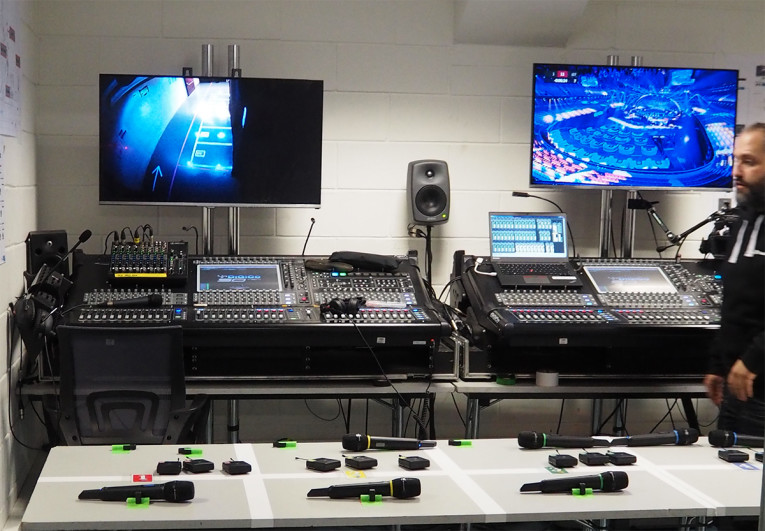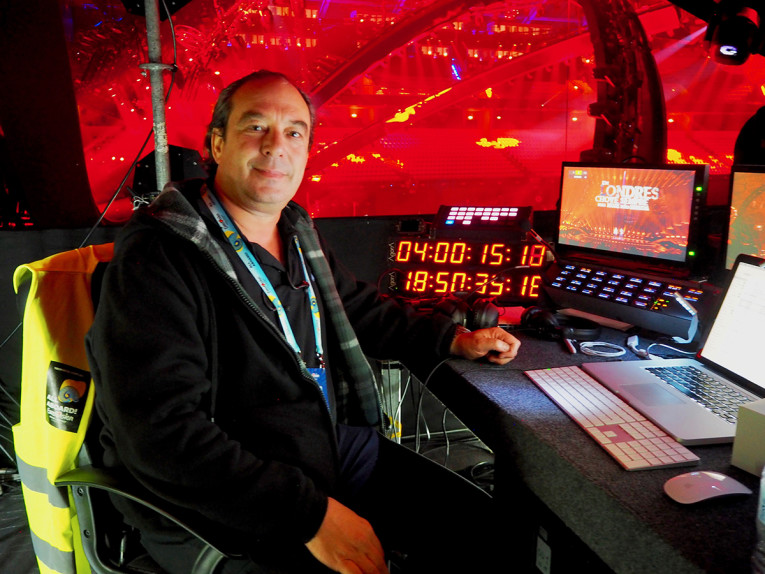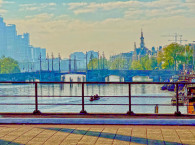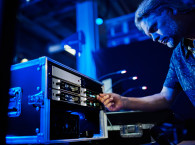
The Eurovision Song Contest (ESC), already running for 63 years, is one of the most debated, loved, and hated entertainment formats ever created. Those not familiar with ESC can start here or here. Politics apart (which is hard to discard), ESC has grown to become a true annual behemoth in live TV production and a cultural phenomenon around the world.
Since the contest started to be widely promoted on social media and streamed live on the Internet, the originally European base of ESC's fan base has evolved globally, conquered millions of additional viewers in Asia, South America, and North America, and participating countries, which recently expanded to include Australia.
For me personally, there were always two reasons to closely follow the event every year.
On a personal level, I love studying how the songs and the performers actually rate in the contest, knowing that some of the best song composers and popular artists from participating countries have already been involved - in all music genres, from naturally fitting easy-listening stars to classically trained names and even rock, hip-hop, and country artists. And because the rules don't dictate that the song's composer needs to be a native of the represented country, in past years we have seen some countries hiring the services of some of the most renowned composers and producers.
But no matter the formula, no one has been actually able to predict how the voting will occur and which song will do better or be the winner, with trends changing from year to year to elect a huge variety of genres and formats, from love ballads to happy disco tunes and plastic pop, to heartfelt political manifestos or true popular song masterpieces - the latter being the Holy Grail that ESC enthusiasts revere and advocate as being the "official ESC winners."


The second reason to closely follow the popular ESC format is related to the technology showcase and technical challenges. Every year since its early inception, the ESC format represents the most formidable challenge in live television production, far surpassing any other format, including the Olympic opening ceremonies or even the Super Bowl. Because this is about live music, an endless parade of 53 countries live on stage and on-air, representing the millions of viewers in each country - with all the political and cultural extent - the pressure for the production teams is tremendous. And to make matters worse, this is followed by the always entertaining and nerve-wrecking voting process, where all countries have to submit the results of their vote - creating a massive infrastructure for bidirectional live contribution links, which is precisely what the Eurovision broadcast network represents after all.

I've been following those technical challenges and formidable achievements for decades now, and I never cease to be fascinated with the level of innovation and creativity that's incorporated in the format every year, making it one of the top entertainment moments of the year.
Even for those scorning the musical content and disliking the political (nationalistic) implications, you have to admire how much the quality of the show itself has evolved and improved over decades. This year, I've been invited by Sennheiser to do a backstage tour of the ESC 2018, happening in Lisbon, Portugal, following last year's surprising victory from young talent, Salvador Sobral. Sennheiser is one of the official technical suppliers of ESC 2018, and has supported the event for many years, supplying wireless microphones and in-ear monitors ever since those technologies were adopted for broadcast and live productions. And these days, there's not a single speaker on stage, and all the microphones are wireless.
For this year's edition, the host broadcaster Rádio e Televisão de Portugal (RTP), opted to tune down the format slightly, inspired by the simple formula of Salvador's winning song, and also due to financial restrictions. As Salvador Sobral stated when he won in Kiev, Ukraine, in 2017, "Music is not fireworks, music is feeling." His song broke ESC records, by scoring the largest number of points ever in the history of the contest, scoring wins in both the jury and public vote, and even receiving two of the three prestigious Marcel Bezençon awards: artistic and composer awards.
Of particular interest is the fact that the song contest no longer involves a live orchestra or instrumental bands as it did in the first decades and until 1998, with only the voice captured live over an instrumental playback. This was the result of the expansion in the number of countries over the years, from the original seven in 1956 to the current 43.

With 43 participating nations, the 63rd Eurovision Song Contest features live broadcasts of the two semi-finals (May 8 and 10) and the grand finale on May 12. All artists rely on Digital 6000 microphones, and use either SKM 6000 handhelds with MD 9235 dynamic capsules, or the SK 6000 bodypacks with Sennheiser custom headmics. For wireless monitoring, 2000 series systems are on duty: Rack-mount SR 2050 IEM two-channel transmitters transmit their signals via A 5000-CP circularly polarized antennas to the artists' EK 2000 IEM bodypack receivers. A large number of bodypacks ensures that all artist groups and the technical crew can be provided with high-quality audio signals.
Volker Schmitt, Director Customer Development & Application Engineering at Sennheiser, and his team are on site to provide technical support for the wireless systems, working with Auditiv's Daniel Bekerman, the Head of Sound for the live shows.

In total, there are nearly 260 tons of material suspended over the stage, designed by Florian Wieder.
I had the chance to listen to the sound mix on headphones and compare it with the sound in the arena and I was really impressed with how balanced and perfect it was. An impressive work from the Auditiv team, and a testimony of how good sound reinforcement technology has become.
eurovision.tv | sennheiser.com
This article was originally published in The Audio Voice weekly newsletter. Register here.







